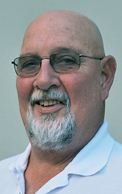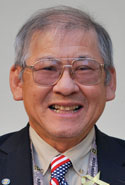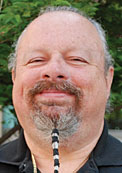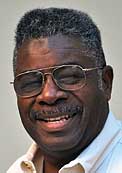 |
||||||||||||
|
VVA Committee Reports, September/October 2015 Constitution Committee BY LESLIE DeLONG, CHAIR
Amendment 01 standardized the outline format. Amendment 02 spelled out all numbers where appropriate. Amendment 03 replaced references to the corporation with the word “Corporation.” Amendments 04, 14, and 30 removed unnecessary dates within the document. Amendment 05 replaced “chairperson(s)” with “chair(s).” Amendment 06 replaced all terms referring to the national board of directors with “national board.” Amendment 08 replaced references to the Associates of Vietnam Veterans of America, Inc., with the letters “AVVA” as indicated in Article I, Section 4, paragraph J, in which Associates of Vietnam Veterans of America is first mentioned. Amendment 09 replaced “from” with “by” in Article I, Section 4, paragraph K. Amendment 10 authorizes the alternate regional director to fill a vacancy for regional director without conducting a special election in Article I, Section 4, paragraph C. Amendment 11 replaced various terms indicating acceptance with the terms “approval” or “approved” for consistency. Amendment 12 removed references to “salaried employees” and “employment” in Article I, Section 5, paragraph B. Amendment 15 replaced “accredited” with “credentialed” in Article I, Section 6, paragraph H. Delegates to the national biennial Convention are “credentialed” as stated in Section 7, paragraph 3 of the same section. Amendment 18 replaced previous terms used with “National Disciplinary Policy.” Amendment 19 requires a state council to amend its bylaws if the council wants to allow its officers who are not elected chapter delegates to vote. Amendment 20 requires a state council to seat an AVVA liaison on the council or the council board upon receipt of written recommendation. Amendment 21 added a new section to Article II and renumbered the remaining sections. Section 4—Board of Directors The council may establish a council board of directors provided the duties, powers, and composition of the board are specified in the council bylaws; members of the council board will be elected by the delegates of the council. Amendment 22 replaced “secretary/treasurer” with “secretary-treasurer” in Article II, Section 4, paragraph A and Article III, Section 6, paragraph A. Amendment 23 replaced all references to the chapter board of directors with “chapter board.” Amendment 24 requires chapters to amend their bylaws to include an officer’s terms of office as one year or two years. Amendment 25 struck the outdated words “or telegram” and “or delivered for telegraphic transmittal” from Article III, Section 5, paragraph G. Amendment 26 replaced the term “nomination committee” with “election committee” wherever it occurred. Amendment 27 relieved the chapter secretary of the responsibility of maintaining DD 214s or other acceptable forms of proof of military service. Amendment 28 replaced the word “who” with “that” in Article IV, Section 1, paragraph A, because a chapter is not a person. Amendment 31 removed the words “the states of” from each region listed in Appendix I. The Constitution Committee thanks all members who submitted proposed amendments and the Convention delegates for their participation and support throughout the amendment process. The committee is working on updating the chapter and state council bylaw templates and will have them ready after the October 2015 committee meeting in Silver Spring. Contact ldelong@vva.org with questions. Membership Affairs Committee BY CHARLIE HOBBS, CHAIR
Those chapters that grew the most during the 2014 fiscal year were recognized for their efforts during the National Convention in Springfield: Nevada Chapter 1076 (Category 25-50), Tennessee Chapter 1078 (Category 51-100), California Chapter 785 (Category 101-200), Alabama Chapter 1067 (Category 201-300), Illinois Chapter 299 (Category 301-400), Florida Chapter 1036 (Category 401-500), New York Chapter 77 (Category 501-600), and Pennsylvania Chapter 862 (Category 601-700). Maryland Chapter 172 walked away with the top honors. It has the distinction of not only being the largest chapter in VVA but maintaining that position for six years. I congratulate you all. We are continuing this program again this year, so it’s not too early to begin working on membership growth and retention. On August 1 VVA kicked off a Once in a Lifetime Membership offer. You can purchase a life membership in Vietnam Veterans of America for just $100 until December 31. There is no proof of age required, no small print, and no contingencies. It’s that simple. There will be no rebates for those who joined or renewed before August 1; only a $100 payment will be accepted. The offer ends at midnight December 31, 2015. A DD-214 is still required. This offer was approved at the April Board meeting. The State Council Presidents were present when it passed, it was reflected in the meeting minutes, and announced in The Veteran. I want to thank everyone for the vote of confidence in re-electing me to the National Board. I look forward to working with the Officers, Directors, National Office, Membership Affairs Committee, and VVA members over the next two years. Minority Affairs Committee BY JERRY YAMAMOTO, CHAIR
Over the past two years we’ve had booths at the NAACP National Convention and the Congressional Black Caucus Foundation Conference. The committee presented the 2014 National Diversity Award to Jorge Pedroza, president of the Puerto Rico State Council, and to Stephen Bowers of the Seminole Tribe of Florida. The 2015 Diversity Award designee is Don Loudner, a member of the Sioux Nation and longtime leader of the American Indian Veterans Association. Congratulations to these recipients. The committee had two resolutions at the 2015 National Convention: one supported a Native American veteran exhibit in the Vietnam Veteran Information Center; the other supported a plebiscite vote on statehood for Puerto Rico. Our committee will have a booth at the Southwest Native American Veterans Association Conference in Albuquerque, New Mexico, September 21-22. Thanks to Henry Urioste, New Mexico State Council president, and Stephen Bowers for their assistance with this conference. My thanks, also, to Francisco Ivarra for representing our committee at the American GI Forum National Convention in Millbrae, California, at the end of July. We will be looking for other events to attend in the next two years. POW/MIA Affairs Committee BY GRANT COATES, CO-CHAIR
Le felt that VVA and the Veterans Initiative, with more than twenty years working to help the Vietnamese account for their war dead, was the only veterans organization that would be able to complete the task. While conducting his own investigation for a story in Vietnam, Le obtained information about a U.S. Marine pilot who had died in a fighter jet crash in 1966. The pilot had been buried by a North Vietnamese soldier, who, in 1993, contacted the U.S. Joint Prisoner of War/Missing in Action Accounting Command (JPAC) with information about the location of the missing pilot’s remains. As a result of this assistance, JPAC conducted a successful excavation and recovery of the remains. The producer’s investigation revealed more information regarding the Vietnamese soldier’s involvement with the U.S. pilot’s body. The veteran said that prior to burying the pilot, he had kept two personal items—a survival pocket knife and an aviator’s watch—as war souvenirs. During the interview, the Vietnamese veteran, Nguyen L. Chi, asked the producer to help him return the items to the pilot’s family. VVA determined that the pilot, Lt. John Brooks Sherman of Darian, Conn., had no living relatives. The producer delivered the items to VVA’s National Office in early 2015. With help from Region 9 Director Dick Southern, Oahu Chapter 858 held a ceremony at the Vietnam War Pavilion, which complements the Honolulu Memorial’s Courts of the Missing of the Vietnam War. The Vietnam War Pavilion is located at the National Memorial Cemetery of the Pacific, known as The Punchbowl. The story of Lt. Sherman’s returned items, as well as the story of a U.S. soldier returning a diary with pictures to Vietnam, can be viewed at https://youtu.be/g3edhAzlw54 PTSD & Substance Abuse Committee BY THOMAS C. HALL, Ph.D., CHAIR
Currently, the Toxic Exposure Research Act of 2015, H.R. 1769 and S. 901, is before Congress. This bill would direct the VA to engage in research that seeks to understand the multigenerational effects of toxic exposures and to treat our children and grandchildren afflicted with health conditions that are associated with a parent’s or grandparent’s exposure. The text of H.R. 1769 and S. 901 is available at www.vva.org Consider this: We joined the military to preserve our way of life and serve the homeland. Now, once again, we are called on to serve, to ensure that our descendants and the children of future generations of American troops are protected should our servicemen and women encounter toxic agents such as TCDD dioxin and any of the countless chemicals that can be found on the battlefield. When we learn that mustard gas was employed recently in Syria, the very real possibility of U.S. military exposure to such agents is multiplied. So, reach out to your senators and representatives on behalf of your children and grandchildren. Call them at their district offices and at their office in Washington. If they have yet to sign on as co-sponsors of this legislation, if they balk at supporting it, or even if they indicate their opposition to it, you need to make the case for enactment. Tell them why this is important to you; convince them that this legislation warrants their endorsement and support. Make these calls now. Set up a time to meet with them in their offices. For the sake of future generations, please make this a priority. The more of us they hear from, the more likely they will be to support this bill. The following link lists all senators and representatives: http://capwiz.com/vva Women Veterans Committee BY KATE O’HARE-PALMER, CHAIR
Our Women Veterans Committee resolutions all passed. Continued monitoring of legislation and VA health care is required to track the outcomes of our resolutions. Thanks to all our committee members for their hard work. We will now be moving on to our goals for the next year. Please forward your ideas to me on which areas we need to focus. Our breakfast guest speaker, Deputy Erika Jeffries of the Illinois Department of Veterans’ Affairs, provided an update on some of the federal changes for veterans within the VA system. She feels fortunate as a woman veteran to be able to help with needed policy changes and implementation. In August at our California State Council meeting, Associate Justice Eileen Moore of the California Court of Appeals spoke about how California law affects veterans. She has a personal interest because she was an Army nurse at the 85th Evacuation Hospital in Vietnam. She set up the first veterans treatment court. (See article by Judge Moore in the September/October 2010 issue.) Her work with criminal and family law as it affects veterans has been diligent. She is establishing seminars for judges and lawyers to teach them about the differences between TBI and PTSD and their effects on returning veterans. What tremendous work she has done for her fellow veterans. Just a few comments on some pending women veterans legislation: H.R. 1356, Women Veterans Access to Quality Care Act of 2015, and S.B. 469, Women Veterans and Families Health Services Act of 2015. We need to watch these bills. There is serious movement to remove the fertility treatment aspect from this legislation as it links to possible toxic exposure of the service member while deployed at certain duty stations. There is also a movement to revisit an old Feres precedent from the 1950s. This is from the Federal Tort Claims Act. Service members can’t sue the government for personal injuries caused by the negligence of other service members, including medical personnel. Thus, the malpractice injuries occurring during active duty cannot be addressed equitably. This trend affects service women and their children, and we need to take a new look at Feres.
|
||||||||||||
|
|
||||||||||||
|
||||||||||||
8719 Colesville Road, Suite 100, Silver Spring. MD 20910 | www.vva.org | contact us |
||||||||||||


















 wenty-four constitutional amendments were passed by the delegates at the 17th National Convention in Springfield, Ill. The 2015 Constitution of Vietnam Veterans of America will be available on
wenty-four constitutional amendments were passed by the delegates at the 17th National Convention in Springfield, Ill. The 2015 Constitution of Vietnam Veterans of America will be available on During the month of June, despite non-renewals and reported deaths, VVA passed the 75,000-member mark, an all-time high. Although the MAC team was fully involved in reaching our goal, we know that the work was done at the chapter level. So, on behalf of the Membership Affairs Committee, I thank all of you who recruited and retained your members.
During the month of June, despite non-renewals and reported deaths, VVA passed the 75,000-member mark, an all-time high. Although the MAC team was fully involved in reaching our goal, we know that the work was done at the chapter level. So, on behalf of the Membership Affairs Committee, I thank all of you who recruited and retained your members.  Thank you, John Rowan, for reappointing me chair of the Minority Affairs Committee. I also want to thank all who served on the committee for the past two years for their input, contributions, and support. We will be reconstituting our committee and searching for any who wish to join. Names of prospective committee members will be presented for approval at the October 2015 BOD meeting.
Thank you, John Rowan, for reappointing me chair of the Minority Affairs Committee. I also want to thank all who served on the committee for the past two years for their input, contributions, and support. We will be reconstituting our committee and searching for any who wish to join. Names of prospective committee members will be presented for approval at the October 2015 BOD meeting. In 2014 Minh Le, deputy head of Vietnamese Feature Program Division at Vietnam Television International, contacted the Veterans Initiative with a request for help regarding U.S. military missing in action. Le had been stationed in Washington, D.C., as bureau chief of VTV and was familiar with VVA’s program.
In 2014 Minh Le, deputy head of Vietnamese Feature Program Division at Vietnam Television International, contacted the Veterans Initiative with a request for help regarding U.S. military missing in action. Le had been stationed in Washington, D.C., as bureau chief of VTV and was familiar with VVA’s program. According to recently released research from the University of California San Francisco and the San Francisco VA Medical Center, veterans exposed to Agent Orange who have PTSD are burdened with a significantly increased risk of dementia. While much more research is needed into the relationship between PTSD and exposure to toxic agents, the need for more peer-reviewed research is magnified exponentially when the impact on our children and grandchildren is considered. The VA is not involved in any such research.
According to recently released research from the University of California San Francisco and the San Francisco VA Medical Center, veterans exposed to Agent Orange who have PTSD are burdened with a significantly increased risk of dementia. While much more research is needed into the relationship between PTSD and exposure to toxic agents, the need for more peer-reviewed research is magnified exponentially when the impact on our children and grandchildren is considered. The VA is not involved in any such research. The dog days of summer are fading. The VVA National Convention was fast paced and information filled. It was a great opportunity to meet up with many members across the nation. We had the highest number of women delegates ever recorded.
The dog days of summer are fading. The VVA National Convention was fast paced and information filled. It was a great opportunity to meet up with many members across the nation. We had the highest number of women delegates ever recorded.  It started with the recognition of the need to find the cause of birth defects, learning disabilities, and cancers afflicting too many of our children and grandchildren from our exposures to the malignant TCDD dioxin that lurked in Agent Orange, a reality Vietnam veterans did not learn about until long after we returned home.
It started with the recognition of the need to find the cause of birth defects, learning disabilities, and cancers afflicting too many of our children and grandchildren from our exposures to the malignant TCDD dioxin that lurked in Agent Orange, a reality Vietnam veterans did not learn about until long after we returned home.